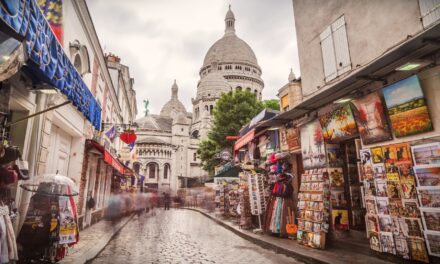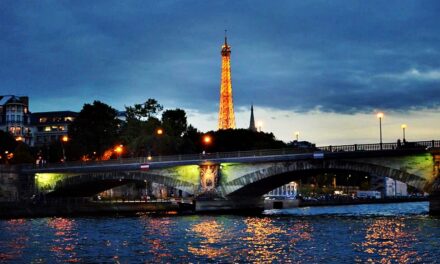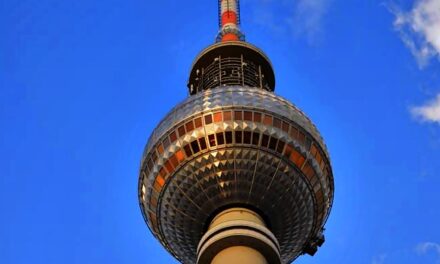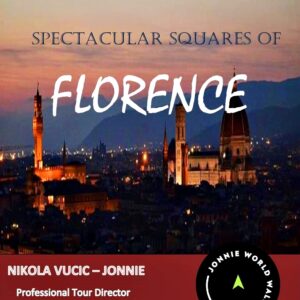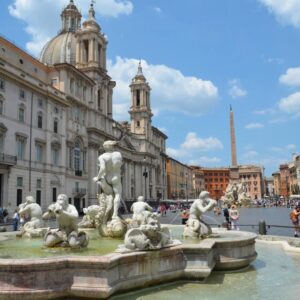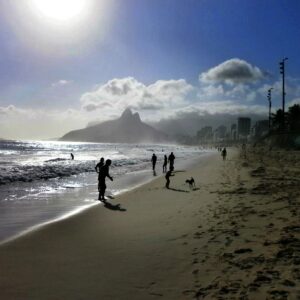Nikolaiviertel – Charming heart of Berlin
Nikolaiviertel – charming heart of Berlin, provides a fascinating glimpse into the old times. It preserves architectural and historic charm with all its anecdotes, hidden corners and almost medieval town atmosphere…

Spree river with district of St. Nicholas on the left
I keep coming back to Berlin, always with my opened heart, because that’s the way one can understand German capital. It welcomes and embraces everyone, making them real Berliners in a day or two, and proudly wins the title of the most opened city in the world. Between renowned museums, famous squares, war memorials, beautiful parks, gates and avenues, I never miss to enjoy Nikolaiviertel – a quarter where real charm of Berlin can be admired.
Location
Nikolaiviertel stands for the quarter of St.Nicholas, in central Berlin. You can find it just a step from the monumental Red Town Hall, or a few minutes walk from iconic Fernsehturm TV Tower and bustling Alexanderplatz. Nestled on the right bank of River Spree, it is framed by Rathausstrasse, Spandauer Strasse and Muhlendamm street and bridge. Nikolaiviertel represents the oldest settled area in Berlin and starting point of all stories about German capital.

Spree river waterfront with nice facades next to Spree river
Intriguing History
Imagine how everything looked different when a trade route in the XIII century passed through this quarter. There was a road over Spree river and two tiny separate settlements Koln and Berlin, existing on both sides of the river. Except of that, nothing existed around, but vast green areas and marshy land created by local rivers. For the first town settlers, it was essential to chose a patron saint and gather around the first parish church. That is how St.Nicholas came in, as a protector of sailors, fishermen, merchants and even brewers. Prosperity of this district culminated with unification of Koln and Berlin to found one single town Berlin in 1237. It is still considered a year when capital of modern Germany was born. Layout of streets and squares was something typical for that time: narrow, short, winding streets gravitating around the parish church square. The same pattern stayed preserved even today.

Charm of iron decoration in Nikolaiviertel
Quarter spirit
Through the centuries, Nikolaiviertel remained an area with an old spirit, with family owned restaurants, workshops, private merchant’s houses, and even elegant mansions of 1700s. It certainly attracted great and creative minds whose bohemian character perfectly fit the way of life in this quarter. Back the, Nikolaiviertel was clearly comparable to Parisian Montmartre. Try to imagine strolling cobblestone streets of St.Nicholas’s district in XVIII and XIX century. You would probably meet young and adventurous Giacomo Casanova sitting in one of local taverns, or famous Norwegian playwright Henrik Ibsen having a few drinks. Celebrated Berlin illustrator and caricaturist Heinrich Zille would greet you as well, while enjoying local food delicacies in one of his favorite restaurants.
Modern era
This beautiful interplay of colors, flavors, new creative ideas and positive energy of the place, was heavily interrupted during WWII, and bombing in 1944. Centuries of Berlin’s history disappeared and Nikolaiviertel turned into a rubble. Uncertainty and tensions stretched throughout the “cold war” era. Half ruined Nikolaiviertel, as a part of East Berlin was waiting for rebirth. Light of hope came with the new project of detailed reconstruction of Nikolaiviertel, based on all available historical documents. Everything was planned to be finished for the 750th anniversary of foundation of Berlin. After 1987. Nikolaiviertel was alive and lovely again. The only detail that distracts the architectural unity, are parts of grey and yellowish communist style building facades, framing this district. Visitors cannot imagine that behind them, the most beautiful part of Berlin reveals its secrets.

Elegant Poststrasse, noble street of Nikolaiviertel
A Stroll through romantic Berlin
I love entering Nikolaiviertel through Am Nussbaum tiny street, leaving behind all the crowd and noise of busy city center of Berlin. And then comes unique transfer through time: nicely decorated stores, authentic souvenir shops, antique shops with a character, old fashioned bars and wrought iron signs above taverns and restaurants… All mentioned, lead you through a totally different, romantic Berlin. Just before reaching small parish church square, at the right corner is one of the oldest taverns, famous Zum Nussbaum Inn from 1705. It was named by the nut tree that used to stand in front of the restaurant. Maybe its delicious local dishes, like schnitzel or a goulash, together with typical Berliner Kindl beer, inspired Heinrich Zille to immortalize this iconic corner and a restaurant on one of his paintings. He simply loved to enjoy small, idyllic restaurant garden during summer months.

Zum Nussbaum tavern in the center of Nikolaiviertel

Nikolaiviertel typical souvenir shops
Parish Church of St.Nicholas
Looking up, your sight can reach the top of a twin spire as a part of late gothic St. Nicholas’s church, built in 1230. It became not only the oldest parish in Berlin, but the center of religious and social life for the first inhabitants as well. Importance continued to grow no matter of a few stylistic transformations through the centuries. Furthermore, it reached political role, when several times, church served as the official assembly building. Nowadays, St. Nicholas’s church is an authentic museum with an exhibition that tells more than enough : “From the base of the city, to the double spire”. That’s the way to successfully unify all historical artefacts and connect past and present.
Parish Church of St.Nicholas, Nikolaiviertel

Foundation Fountain with Berlin Bear statue
If you are wandering around Nikolaiviertel on Friday afternoon, try not to miss a perfect reminiscent of religious music, by attending organ concert at 5 p.m. Stop for a minute and check out an interesting memorial medallion on the pavement in front of the church. It represents the first coat of arms from the time when Berlin received a city status. You can take a nice photo in front of The Foundation Fountain, with old coat of arms at the base and a symbol of Berlin – statue of a bear holding the shield with an eagle.
Baroque Architecture
If your interests align with performing arts, then a small theatre behind the church can offer local stage full of humor and great plays. Architectural jewels of Baroque and Roccoco style are represented through elegant Knoblauhaus and specially Ephraim Palace from 1766. It formerly belonged to Veitel Ephraim, court jeweler, master class gold and silver manufacturer. He embellished his home with statuettes, gilded wrought iron balconies and luxury interior which perfectly fit within today’s temporary exhibition space.
Statue of St. George
Easy walk towards Spree river will bring you to symbolic bronze statue of St.George slaying the dragon, which formerly adorned a courtyard of Emperor’s Palace in the XIX century. Now it decorates a small square with a nice view of the Spree river and some amazing dining options.

Opulent Ephraim Palace facade

Statue of St. George slaying the dragon
Brauhaus Georgbraeu
Lunch or dinner at Brauhaus Georgbreau Restaurant is a special traditional delight. If you sit outside, then get ready to experience the best known beer garden in Nikolaviertel, with colorful flowers, and river just next to you. Interior wooden furniture brings warm spirit of a brewery, while you are looking towards copper kettles of restaurant’s own beer production. It’s your time to enjoy bites of tender pork knuckle with sauerkraut or a warm, tasty potato soup. Evening stroll down the Spreeufer – narrow waterfront promenade is a must. Overlooking boat cruises and traditional bars and restaurants offering adorable apfelstrudel (apple strudel), you can feel both noble and bohemian touch. Adding a bit of elegant and rustic surrounding, creates very special Nikolaiviertel atmosphere.

Geogrbraeu restaurant with Cathedral dome in the distance
All year round, this city quarter of Berlin brings more and more explorers willing to dive into the real history of this mega – metropolis. Some of them, being blessed to visit Berlin multiple times, choose Nikolaiviertel because of one and true feeling of being so warmly welcomed. In a cosy little town in the heart of Berlin, with just a few streets, it seems that every corner has its story and authentic experience is guaranteed.
At the end, I can just be endlessly proud of Berliners, who saved and revived such a precious part of their cultural heritage

Jonnie enjoying perfect atmosphere in the heart of Nikolaiviertel
Ready to explore more?
♣
Whenever planning a detailed stroll through Nikolaiviertel, check the its official website with all practical info, music events, exhibitions, best restaurants and loads of history and anecdotes…
♣
This exciting book presents adventures and turbulent life of famous Giacomo Casanova. He discovers Berlin and enjoys St.Nicholas’s quarter in a unique way…


